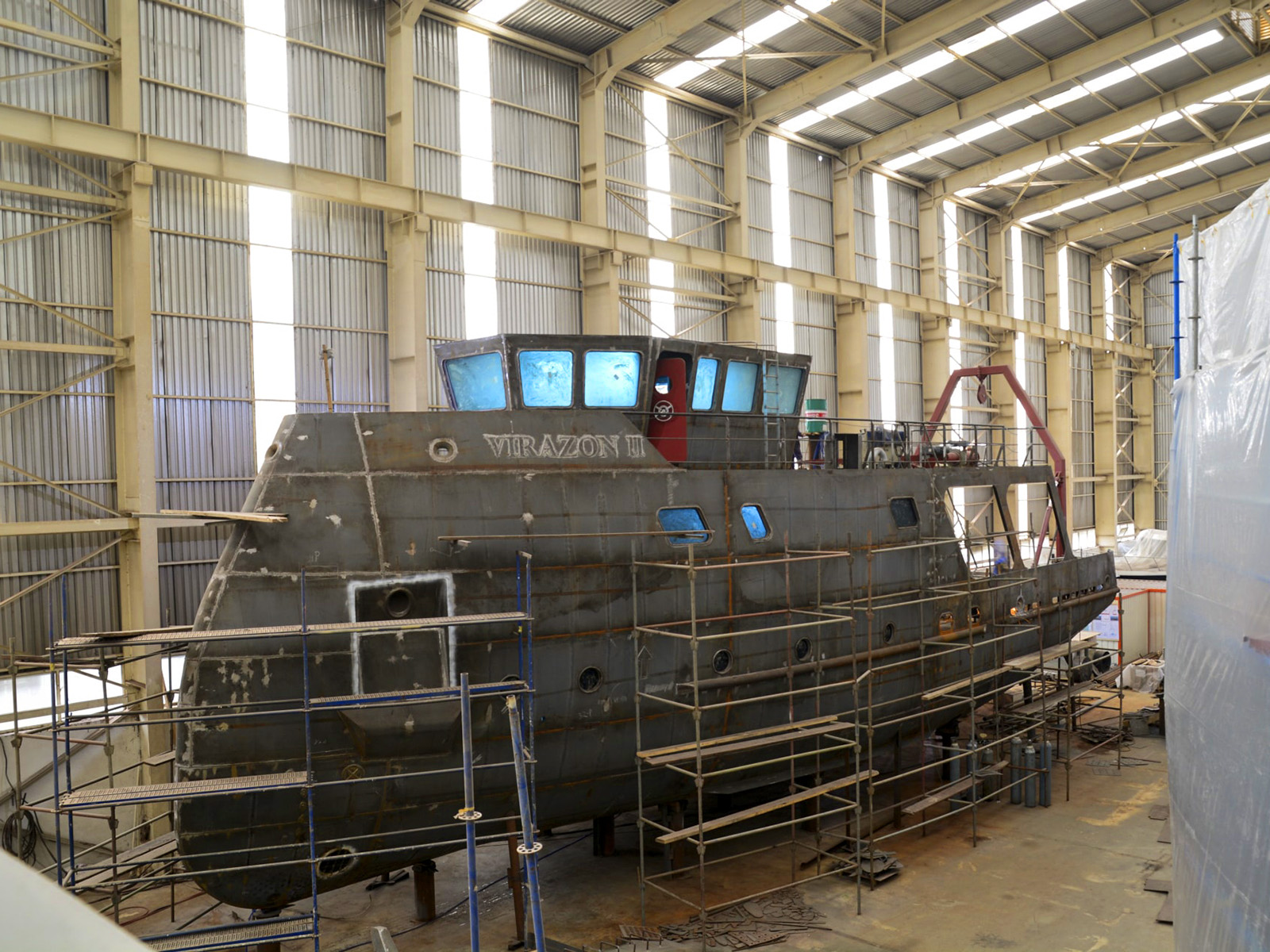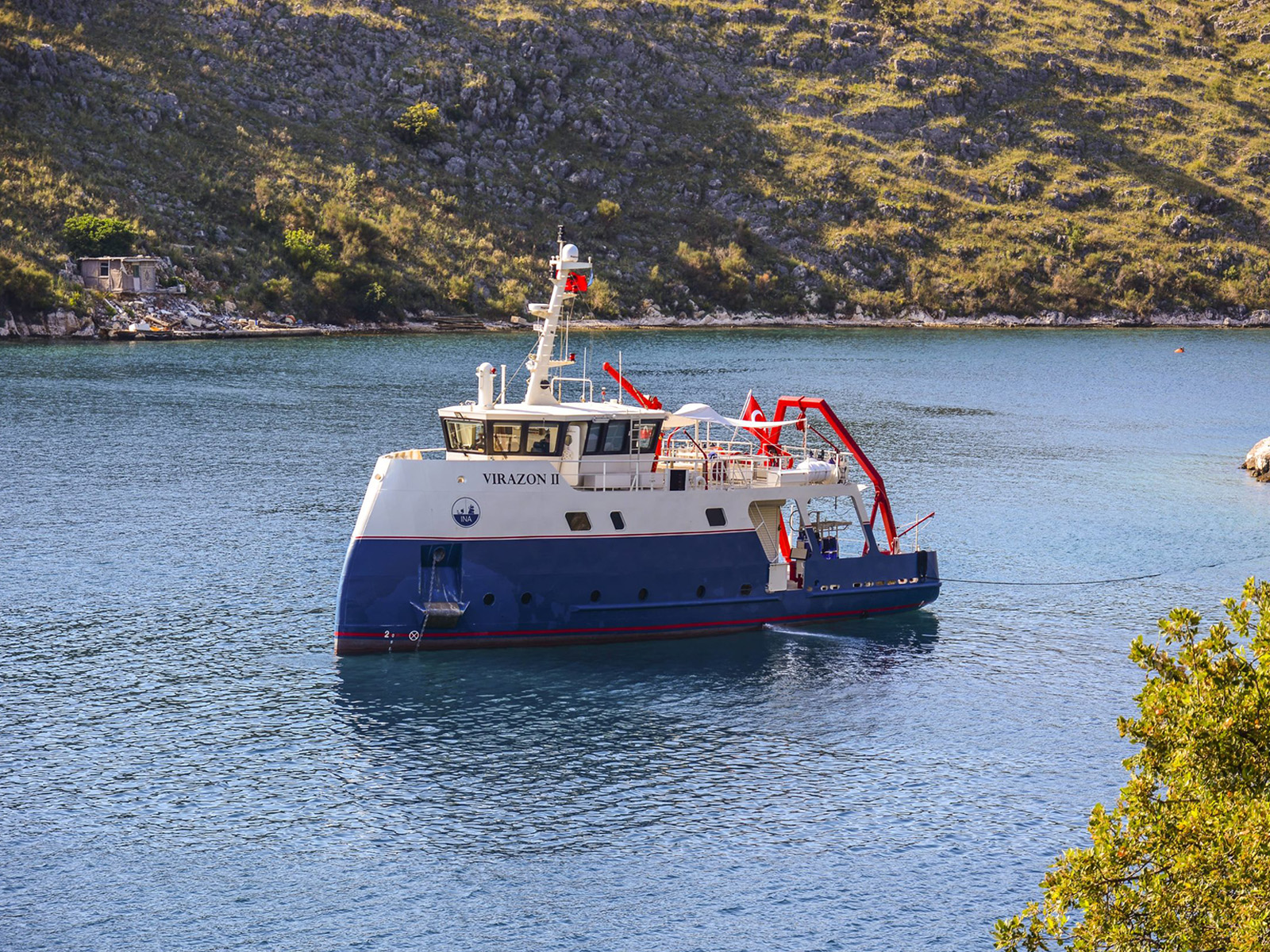Virazon II: Hope of a Generation, Dream of a Generation
We've boarded Virazon II, which was classified as the world's first archaeological research ship, and we want to see with our own eyes how the life is on the ship.
The world's first scientific underwater excavation was carried out in Gelidonya in 1960 by the team led by George Bass and Peter Throckmorton. George Bass, who had leaded this excavation, later also pioneered the establishment of the Institute of Nautical Archeology (INA) in Bodrum. This institute has been using a very special vessel for underwater research and archaeological excavations since 2016: Virazon II:
Although there are many ships used for archaeological purposes in the world's seas, Virazon II is the first vessel (ARV/Archaeological Research Vessel) built specifically for this purpose. Maybe not as fast as Absolute 64 Fly, but it's fast enough in its class and comfortable enough for its employees. Tuba Ekmekçi, Director of the Bodrum Research Center at the Institute of Nautical Archeology, and archaeologist Orkun Köyağasıoğlu, who is also the designer of the vessel Virazon II, say that this vessel is no different from a five-star hotel for them. Mr. Orkun states that while designing this research vessel, he benefited from his 40-plus years of diving experience and designed the vessel based on a pressure chamber. Because occupational safety comes first.

So how is it possible to sustain life in an area of only 130 square-meters?
Actually the system is simple: They work in groups of two. Cleaning is done on time, the cook is assisted in preparing and tidying the table, the compressors are loaded, the time keeper allows underwater workers to focus solely on their work, and the research findings are cataloged. So everything runs smoothly. If it doesn't, Mr. Orkun steps in immediately. What keeps the life on the vessel flowing in a systematic way is that the bunk beds are numbered. Because the laundry is done according to the bunk bed numbers.
The three-deck vessel is the home of a crew of 20. It really is a home, because during the two and a half months of research, team members spend more time with each other than with their families. Therefore, Mr. Orkun and Ms. Tuba say that they try to adapt the newcomers to the life on board rather than adapting them to research.
Out of the 20-person team involved in the study, 10 are Canadian, French, Spanish and American. So how come no one complains about the food? The biggest factor in this is the Turkish cook, but the size of the kitchen and storage capacity of the Virazon II research vessel seems to help him a lot. Mr. Orkun underlines that it is much more difficult to find a cook who would agree to work in such projects, indoors and away from civilization, than finding an archaeologist.

The importance of the kitchen is better understood when one remembers that since the vessel prior to Virazon II had only one refrigerator, most of the food had to be stored in the bilge, and that in the time of George F. Bass there was only one glass of fresh water on the water surface.
The biggest challenge is communication possibilities. Virazon II has been researching on the Bronze Age Shipwreck off Kumluca since 2019. The excavation site is at a point where there is no communication with the outside world. Satellite phone can only be used in very emergency situations. Every day, after the work is completed, at about 7 pm, a person picks up the phones, takes them to Karaöz and establishes a connection. Of course, at that moment, messages are raining down all phones.
The crew members, who are at sea six days a week, stop by the Setur Finike Marina once a week to set foot on land, communicate with their loved ones, sit on a bench with a mug of coffee and spend some time for themselves. Some send postcards to their loved ones, as in old times.

Despite all these challenges, Ms. Tuba and Mr. Orkun are people who have fulfilled their childhood dreams. Ms. Tuba had always wished to work in a "watery job". After reading the Uluburun article when she was in high school, she decided that she had found the profession she was looking for. In the end, when she was a 3rd grade university student, she was accepted as an intern in INA that no one could easily be admitted into. She is currently the Director of the Bodrum Research Center. Mr. Orkun wished to be either a naval engineer or an archaeologist. When you learn that Orkun Bey's father is Yücel Köyağasıoğlu, known for his gulet type schooner designs, you are not surprised at his choice.
This is perhaps the biggest feature of the Virazon II research vessel: it was designed by people who love their profession, and it is used by people who love their profession. Our chance is to witness this love firsthand.
Eda Selçuk, Setur Finike Marina Front Office Representative
Photographs: Institute of Nautical Archeology


